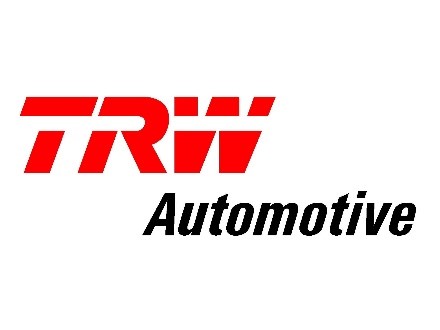CCI finds no evidence of resale price maintenance on sale of KAFF appliances on Snapdeal
The Competition Commission of India (“CCI/Commission”) vide order dated 15.01.2019 under Section 26(6) of the Competition Act, 2002 (“the Act”), has dismissed allegations of Resale Price Maintenance(“RPM”)[1] against Kaff Appliances (India) Pvt. Ltd. ( “KAFF/ OP”).The information was filed by Jasper lnfotech Private Limited ( “Snapdeal / Informant”) in 2014 under Section 19(1)(a) of the Act alleging contravention of the provisions of Section 3(4) of the Act, wherein, CCI vide its prima facie order dated 29.12.2014 had directed investigation by the Director General ( DG) after noticing that the practice of RPM adopted by KAFF appliances , with a market share of 28% , may have an adverse effect on competition in India.
BACKGROUND AND ALLEGATIONS
Snapdeal owns and operates www.snapdeal.com, an online market place which provides a medium for buyers and sellers to meet and transact. It was alleged that KAFF being aggrieved by the sale of its products at discounted prices on Snapdeal, displayed a caution notice on its website , sent a legal notice to Informant and an email to Informant indicating that the product sold on Snapdeal were counterfeit , infringing its trademark , deceiving the public by trading on the goodwill of Kaff and were also undercutting the prices of authorized dealers. Further, it was also alleged that KAFF mentioned in the notice that it will not honor the warranties of the products sold in its brand name through Snapdeal. Therefore, CCI noted that the Opposite Party was having an arrangement/agreement with its authorized dealers under which the dealers were given the ‘Market Operating Price (MOP) price list’ for its product. Such an agreement hinders the ability of dealers/distributors to compete on the price of the product. The Commission noted that such prescription of MOP by the Opposite Party to its dealers and insistence to follow MOP pricing regime , prima facie, seems to be in contravention of section 3(4)(e) read with section 3(1) of the Act. It is apposite to note here that RPM and other vertical restraints under Section 3 (4) of the Act are not per se anti-competitive but the onus would lie upon the Informant to demonstrate that the RPM has an Appreciable Adverse Effect on Competition (“AAEC”). Noticeably, in the present case, the CCI , in its prima facie order had not identified AAEC but instead opined that RPM ‘may’ have an impact on consumers and is ‘likely’ to have an AAEC.
DG Investigation
The DG in its investigation report (“Main DG report), observed that the relevant markets i.e. market for chimneys and hobs in India are very competitive with approximately 30 active players. Faber, a renowned player in the relevant market, was found to be the leader with the highest market share on the basis of turnover in last 5 years followed by the OP. Their respective market shares in the market for chimneys and hobs for 2014-15 was found to be Faber: 26.4% in Chimney and 31.2% in Hob and the OP: 19.7% in Chimney and 25.2% in Hob. Each player in the relevant market was found to be having several dealers in each district and town and most of the dealers were found to be multi-brand dealers. Based on these factors, the DG concluded that the OP did not possess sufficient market power to cause AAEC as provided under Section 19(3) of the Act. DG observed that since the OP does not possess enough market power to cause AAEC. Accordingly, contravention of the provisions of Section 3(4)(e) read with Section 3(1) of the Act could not be established. Curiously, though the DG did not find any contravention by the OP, still the DG identified 3 officials, namely Mr. Deepak Anand, Mrs. Kamlesh Anand and Ms. Malvika Anand, responsible for the management of OP for the purposes of Section 48 of the Act, in the event of Commission finding the OP in contravention.
However, the Commission observed that to enquire whether the OP imposed a price restriction, it needs to be ascertained whether OP had instructed to send the impugned E-mail dated 04.02.2014. Accordingly, further investigation was directed by the Commission in the matter under Section 26(7) of the Act vide its order dated 30.10.2017. In pursuance of the said directions, the DG carried out supplementary investigation. Accordingly, the DG in its “Supplementary report” opined that since the Informant was only a market platform and not a purchaser of the product, as per the definition under Section 3(4)(e) of the Act, RPM could not be imposed by the OP on the Informant and as such the present information filed by the Informant is questionable.
CCI observation and Conclusion
CCI dealt with the primary issue of the applicability of Section 3(4) of the Act to the facts of the case, given that the DG has opined that since the Informant is only a market platform, it does not form part of the vertical chain and hence, cannot be subjected to a vertical restraint by the OP under Section 3(4)(e) of the Act. CCI found the aforesaid observation of the DG inconsistent with the working of the technology driven markets. CCI observed that the online portals or platforms often provide various value added services e.g. logistics (inbound as well as outbound), warehousing, marketing and sales including provision of assistance to consumers in sorting and buying products, return/replacement services, tracking services for orders placed etc. online portals act as a parallel distribution chain along with the off-line distribution channels. The customer/buyer also, when purchasing the products online, perceives the online portal as a valuable link between such customer and the seller. Therefore, observation of the DG that the Informant/online portal does not perform any function which could make it a part of vertical/supply chain seems illusory in context of a technology driven markets, as opposed to traditional markets. Further, the inference of the DG, that the Informant not being the buyer/purchaser of goods in the distribution chain, the basic ingredient for sustaining allegation of RPM (i.e. presence of purchaser and seller) is not tenable. Any entity/firm contributing value to product/service will be deemed to be a part of the value chain. The ownership of such product to pass through every stage/entity cannot be considered as a prerequisite in the value addition process. The argument regarding absence of seller-purchaser relationship in case of online platforms is premised on ‘form’ rather than ‘substance’. The definition of RPM under the Act is inclusive and the basic ingredients are ‘resale’ and seller’s determination of the resale price. RPM essentially refers to agreements among enterprises at different levels in a distribution channel, wherein the resale price at which a product or service must be sold by a distributor is pre-determined by the seller in some manner. Thus, regardless of the identity of the direct purchaser, the resale of the product is effected through the platform and thus, the essential ingredients of resale price maintenance are fulfilled. Thus, to say that the Informant/online portals have no role or influence over the prices may not be correct. In view of foregoing reasons, the Commission disagreed with the DG’s observation and observed that the agreements between manufacturers/distributors and e-commerce players can be looked into under Section 3(4) read with Section 3(1) of the Act.
CCI analysis of RPM
CCI while providing some light on literature on RPM observed that an RPM agreement is recognized under Section 3(4)(e) of the Act , which is a vertical imposition , whereby, a manufacturer/seller dictates the price at which the product can be resold by the downstream distributor/wholesaler/retailer . An RPM can be of various forms, but the Act generally prescribes a price prescription/agreement when the agreement imposes a restriction on a resale at a price below the price stipulated in the agreement between manufacturer and downstream distributor. The purpose of such stipulation is to set a floor price so as to avoid price competition between retailers beyond a certain price. The economic objective of infusing competition at all levels is to ensure efficiency that leads to consumer welfare in the form of reduced prices and wider set of choices. In the light of the aforesaid , CCI observed that an agreement falling under Section 3(4) of the Act requires to be analyzed under the “rule of reason” to gauge whether such an agreement has the potential to cause an AAEC and thus can be held as an anti-competitive agreement under Section 3(1) of the Act. Thus, to establish a contravention under Section 3(4) read with Section 3(1) of the Act, two conditions need to be fulfilled – (i) the agreement /understanding ought to exist (ii) such agreement/understanding has caused or has the potential to cause AAEC. Section 19(3) lays down the analytical framework to examine whether an agreement/understanding has or is likely to have an AAEC. Only those agreements/understanding whose net effect is anti-competitive i.e. if the anti-competitive effects exceeds the pro-competitive effects, are prohibited by the Act.
In the above context, CCI noted that neither the Main Investigation Report nor the Supplementary Investigation Report revealed the existence of any RPM practice vis-à-vis the dealers of the OP. The DG surveyed 211 dealers/distributors of the OP. However, the said survey did not bring out the existence of any agreement/understanding, on being asked whether dealers were getting any price or discount prescriptions/instructions from the OP. The dealers/distributors denied any such imposition and categorically stating that they never sold their products below net landing prices and there was no prior approval required for online selling. The survey further revealed that the dealers used to offer their respective prices for products displayed on the online portal of the Informant or other online portals, and any extra discount/cash-back was funded by those online retailers themselves. Thus, vis-à-vis the dealers, CCI could not find any evidence of an imposition of a minimum RPM by the OP.
Further, as far as 3 pieces of evidence , the E-mail dated 04.02.2014, the Caution Notice dated 16.04.2014 and the Legal Notice dated 18.04.2014 are concerned, the OP has not denied the issuance of the Caution Notice and the Legal Notice. Rather, the OP has sought to justify them. The OP has claimed that the Caution Notice was issued to warn the general public about the selling of counterfeit products on the online portals. Similarly, the Legal Notice was issued to give an opportunity to the Informant to remove the products of OP from its online portal as the same were counterfeit and were procured from unauthorized/unverified sources. With regard to the E-mail dated 04.02.2014 sent by Mr. Mohit Seth, wherein a warning was given that the company (the OP) will not allow sale of products on Informant’s portal if MOP is not maintained,the Commission observed that this E-mail was sent 2 months prior to the ‘Caution Notice’ dated 16.04.2014, which was displayed by the OP on its website. Through the said caution notice, the OP was alerting the customers of kitchen appliances to not purchase the OP’s products from Informant’s portal as the e-commerce platforms like Snapdeal of the Informant and ‘NAAPTOL’ were stated to be selling various counterfeit products of OP. The OP concluded by stating that it never hindered the sale of its products on online portals and the E-mail, Caution Notice and Legal Notice were not followed by any concrete action on its part and hence, there was no impact on the online sale of OP’s products, much less on the online portal of the Informant.
In view of the aforesaid , “Commission observed that though the existence of the E-mail, Caution Notice and Legal Notice are established in the present case, the justifications offered by the OP in the context of the Caution Notice and Legal Notice cannot be completely disregarded. A right of the manufacturer to choose the most efficient distribution channel ought not to be interfered with, unless the said choice leads to anti-competitive effects. The Commission finds merit in the justifications offered by the OP. Further, the Commission observes that the evidence on record does not demonstrate that the conduct/practice of the OP led to any AAEC”.
Further, the data collected by the DG did not show any decrease in the volume of sales after the issuance of Caution Notice which was issued two months after the impugned E-mail, and on the contrary, there has been an increase in the sale. Thus, the data on record shows that the adverse impact of Caution Notice, if any, was not sufficient enough to meet the criteria laid down under the Act i.e. AAEC. The DG also found that the impugned E-mail dated 04.02.2014, which formed the gravamen of the present matter, was not followed by any real action from OP. Therefore, CCI concluded that there was no AAEC in the present case. Further, the presence of a large number of dealers who were competing with each other suggests a fair degree of intra-brand competition. The data collected by the DG showed that there were 1422 dealers selling OP’s kitchen appliances all over India during the relevant time period who were found to be competing for the turnover linked incentives. Discounts were variable in nature and linked to the target being achieved. Since incentives were variable, the net landing price for each dealer was also different. This enabled different dealers to offer different prices to customers for the same product. Moreover, competition among distributors was found to be even stiffer as they were exclusively dealing with the OP’s products. Thus, the Commission noted that vis-à-vis the dealers the evidence did not reveal the existence of any price restriction or minimum RPM. As regards the Informant, though the existence of Caution Notice, Legal Notice and Email has been established, it has not been conclusively established that they were used as instruments for imposing RPM on the Informant. Further, since vertical agreements falling under Section 3(4) read with Section 3(1) are subjected to rule of reason analysis, even if there exists a price restriction by the OP, AAEC needs to be established. However, the actual impact of the conduct of OP did not demonstrate any adverse effect on competition. Furthermore, the existence of intra-brand competition among dealers/distributors negate the anti-competitive impact of the OP’s alleged conduct. Thus, no contravention of the provisions of Section 3(4)(e) of the Act was found against the Kaff/OP.
[1] Enforcement of minimum or recommended retail prices by suppliers/ manufacturer or setting of floor price.








